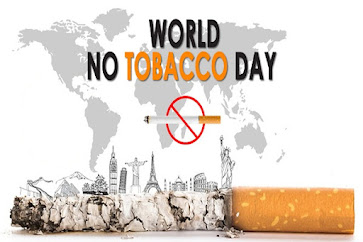Breath of Life: World Lung Cancer Day 2023 and Global Lung Health Awareness
- Introduction
World Lung Cancer Day is observed on August 1, 2023. It serves as a reminder of the global health challenge posed by lung cancer and its impact on millions of lives. The day aims to raise awareness about the risk factors, prevention, and early detection of lung cancer. It also emphasizes the importance of providing support and care for individuals and families affected by the disease. Through campaigns and initiatives, World Lung Cancer Day strives to promote tobacco control measures, highlight the significance of clean air and environmental health, and advocate for improved access to healthcare and advanced treatments.
Socially, lung cancer poses several challenges. First and foremost, it deeply affects the individuals diagnosed with the disease and their families. The emotional toll of a cancer diagnosis can be devastating, and lung cancer's high mortality rate places immense stress on patients and their loved ones. Moreover, lung cancer patients may face stigmatization due to its link with smoking, which can lead to feelings of guilt and shame. This social stigma can also hinder open discussions about the disease, leading to delayed diagnosis and limited support for affected individuals.
Globally, lung cancer is a major public health issue. According to the World Health Organization (WHO), it is the leading cause of cancer-related deaths worldwide. Its prevalence is especially significant in low- and middle-income countries, where access to healthcare and cancer treatments may be limited. The economic burden of lung cancer is substantial, as it affects productivity and places a strain on healthcare systems. Additionally, smoking is not the only risk factor for lung cancer; exposure to environmental pollutants, including indoor and outdoor air pollution, contributes significantly to the disease burden globally.
In India, lung cancer is also a growing concern. The country has experienced a rise in lung cancer cases due to a combination of factors, including the increasing prevalence of tobacco use, air pollution, and changing lifestyle habits. Tobacco consumption is widespread, with both smoking and smokeless tobacco products being common. Furthermore, India's rapid urbanization and industrial growth have led to worsening air quality, exposing millions of people to harmful pollutants that increase the risk of developing lung cancer.
Epidemiology of Lung Cancer: Lung cancer is a global public health issue, and its incidence and mortality rates vary across regions and populations. According to the World Health Organization (WHO), lung cancer is the most common cancer worldwide, accounting for a significant number of cancer-related deaths.
In many high-income countries, lung cancer is the leading cause of cancer death among both men and women. This high incidence is primarily attributed to high rates of tobacco smoking. In low- and middle-income countries, lung cancer is also a significant health concern, and its incidence is increasing due to a combination of factors, including smoking, air pollution, and changing lifestyle habits.
The burden of lung cancer is particularly significant in Asia, including India and China, where tobacco consumption and exposure to environmental pollutants are widespread. In India, lung cancer is the leading cause of cancer-related deaths among men and the second leading cause among women.
While lung cancer primarily affects older individuals, there has been a concerning increase in cases among younger people, especially non-smokers, due to factors like exposure to secondhand smoke, environmental pollutants, and genetic predisposition.
Efforts to combat lung cancer involve tobacco control measures, public health campaigns to raise awareness, early detection programs, and advancements in personalized treatment options. Reducing exposure to risk factors and promoting a healthier lifestyle are essential steps to reduce the burden of lung cancer globally.
Lung cancer is a complex disease that arises from the uncontrolled growth of abnormal cells in the lung tissue. It is essential to understand its pathology, pathogenesis, and pathophysiology to develop effective strategies for diagnosis, treatment, and prevention.
- Pathology:
Lung cancer is broadly classified into two main types: non-small cell lung cancer (NSCLC) and small cell lung cancer (SCLC). NSCLC accounts for approximately 85% of all lung cancer cases and includes three major subtypes: adenocarcinoma, squamous cell carcinoma, and large cell carcinoma. SCLC, on the other hand, is a more aggressive form of lung cancer that constitutes about 15% of cases.
- Pathogenesis:
The development of lung cancer is a multi-step process influenced by various genetic and environmental factors. The primary risk factor for lung cancer is tobacco smoking, which is responsible for a significant proportion of cases. Cigarette smoke contains numerous carcinogens that damage the DNA in lung cells, leading to mutations and genomic instability. These mutations can activate oncogenes (genes that promote cell growth) or inactivate tumor suppressor genes (genes that inhibit cell growth), disrupting normal cell regulatory mechanisms.
Apart from smoking, other risk factors include exposure to secondhand smoke, occupational hazards such as asbestos, radon gas, air pollution, and genetic predisposition. Lung cancer may also develop in individuals without any known risk factors, suggesting that there are still unidentified factors contributing to its pathogenesis.
- Pathophysiology:
The pathophysiology of lung cancer involves the formation of a tumor mass within the lung tissue. As the cancer cells grow uncontrollably, they may invade nearby structures, such as blood vessels and lymph nodes. This invasion can lead to local spread (invasion into nearby tissues) and distant metastasis (spread to other organs through the bloodstream or lymphatic system).
Risk Factors of Lung Cancer:
Tobacco Smoking: Cigarette smoking is the most significant risk factor for lung cancer. The harmful chemicals present in tobacco smoke damage the cells lining the lungs, leading to genetic mutations and an increased risk of developing cancer.
Secondhand Smoke: Exposure to secondhand smoke, also known as passive smoking, is a significant risk factor, particularly for non-smokers. Inhaling smoke from other people's cigarettes or tobacco products increases the risk of lung cancer.
Occupational Exposure: Some occupations involve exposure to carcinogens, such as asbestos, radon, uranium, arsenic, and certain industrial chemicals, which can increase the risk of lung cancer.
Radon Gas: Radon is a naturally occurring radioactive gas that can seep into buildings from the ground. Prolonged exposure to high levels of radon gas increases the risk of lung cancer.
Family History: Individuals with a family history of lung cancer may have a higher risk due to shared genetic factors and potential environmental exposures.
Air Pollution: Prolonged exposure to outdoor air pollution, such as particulate matter, nitrogen dioxide, and ozone, has been associated with an increased risk of lung cancer.
Personal or Family History of Lung Diseases: People with a history of certain lung diseases, such as chronic obstructive pulmonary disease (COPD), may have an elevated risk of developing lung cancer.
- Symptoms:
The growth of the tumor mass can obstruct the airways, leading to symptoms like persistent cough, shortness of breath, and wheezing. If the tumor affects adjacent structures like the esophagus or nerves, it can cause additional symptoms, such as difficulty swallowing or shoulder pain.
- Treatment:
for lung cancer depends on the type, stage, and overall health of the patient. It may involve surgery, where the tumor and surrounding tissues are removed, or radiation therapy to target cancer cells with high-energy rays. Chemotherapy uses drugs to kill cancer cells or stop their growth, while targeted therapy focuses on specific genetic changes in cancer cells. Immunotherapy enhances the body's immune system to attack cancer cells. For advanced cases, palliative care is vital to manage symptoms and improve the patient's quality of life. Prevention efforts include tobacco cessation, reducing exposure to environmental pollutants, and promoting healthy lifestyles to reduce the risk of lung cancer.
- Prognosis:
Lung cancer prognosis depends on various factors like stage, type, overall health, and response to treatment. Early-stage non-small cell lung cancer (NSCLC) has a better prognosis compared to small cell lung cancer (SCLC). With advancements in treatments like surgery, radiation, chemotherapy, immunotherapy, targeted therapy, and combination approaches, survival rates have improved for some patients. However, advanced-stage cases often have a less favorable outlook. Regular follow-ups, lifestyle changes, and support from healthcare professionals contribute to managing the disease and enhancing quality of life. It's crucial to consult with an oncologist to discuss individual prognosis and personalized treatment options.
Key Message: World Lung Cancer Day, observed on August 1, 2023, aims to raise awareness about the impact of lung cancer on individuals and communities worldwide. The day emphasizes the importance of prevention, early detection, and access to quality healthcare for lung cancer patients. Tobacco control measures and clean air initiatives are vital in reducing the burden of lung cancer, especially in low- and middle-income countries where the disease is prevalent. By promoting healthy lifestyles and supporting research for advanced treatments, we can strive towards a future with healthy lungs for all.
Regards and Thanks,
Dr. (Prof)Rajendra T. Nanavare
Chest Physician, Mumbai.






nice sir
ReplyDeleteVery elaborate and useful information
ReplyDeleteRajendra nice article very informative thanks for updating my knowledge 🙏
ReplyDeleteThank for updating nice article sir . Live long healthy life
ReplyDeleteआदरणीय ननावरे सर आपल्या सानिध्याने आणि अतिशय माऊलीच्या प्रेमाने मी भारावून गेलो आहे .आपल्या सानिध्यात मला जे काही सर्वसामान्य जन माणसांना चिकित्से मार्फत मदत करता आली, त्या तुमच्या वैज्ञानिक वैद्यकीय माहितीचा मी अत्यंत ऋणी आहे, आपण समाजासाठी जे काही अतिशय आपुलकीने गरजूंना अति आपदा च्या वेळेस जीव वाचवण्यासाठी संपूर्ण आयुष्य लाभवलेला आहे त्या शिदोरीचा आम्हालाही सोबत परत अशक्य न फेडण्याएवढा ऋणानुबंध मिळालेला आहे, अशा आमच्या सर्वांच्या मनात आपण समाजासाठी झुजत आहात ,परमेश्वर आपणास सतायुषी आयुष्य लाभ देवो जीवेत शरदम शत:
ReplyDeleteडॉ ख्वाजा एम आर.
kkllk
DeleteThank you some much everyone
ReplyDelete